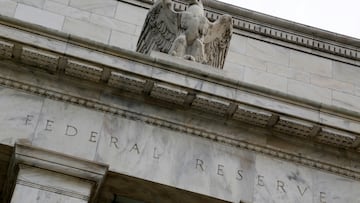FINANCE
Is the Fed considering not cutting rates in 2024? This is what the experts say
Interest rates remain high as economists begin forecasting the economic impact would be if the Fed chose to cut the federal funds rate.

The federal funds rate (FFR), determined by the US Federal Reserve’s Free Open Market Committee (FOMC), is one of the world’s most closely followed interest rates. The FFR is the baseline interest rate in the US and thus influences all other rates. For instance, rates for a 15- or 30-year mortgage have been at their highest level recently because the FFR is tacked onto the rate offered to homebuyers to reduce the risk of defaulting for institutions offering these loans.
Labor market softens as Fed considers lowering rates
But, after more than a year in this high-rate environment, some economists believe it is time to begin lowering the FFR to avoid an economic recession should high interest rates slow the movement of money through the economy to an excessive level. When looking at the labor market, which was a driver of the Fed’s decision to raise rates rapidly, we see that while unemployment remains low, the gains in wealth seen over the pandemic benefitted higher income groups much more workers with lower incomes.
In a recent blog post published by the New York Federal Reserve, analysts argued that “the nation’s lowest-wage workers experienced the strongest wage growth during the pandemic.” However, this is only true as a percentage. While it is true that wages for the lowest twenty percent of earners increased by 33 percent, the numerical gains were the smallest of any quintile.
- Highest 20 Percent of Income Earners (81st to 100th Percentile): +12.60 percent between 2019 ans 2022 | +$22,017
- Fourth 20 Percent (61st to 80th Percentile): +19.11% | +$16,027.00
- Third 20 Percent (41st to 60th Percentile): +19.87 percent | +$10,553
- Second 20 Percent (21st to 40th Percentile): +19.29 percent | +$6,355
- Lowest 20 Percent (1st to 20th Percentile): +33.52 percent | +$4,101
While these gains protect workers, inflation has continued even though its pace has slowed.
During a recent speech by Federal Reserve Governor Christopher J. Waller at Opus College of Business in Minneapolis, he said of the January’s CPI report, which tracked a 0.3 percent, that it was too soon to tell if it “was more noise than signal.” Gov. Waller and many other Fed officials are unsure if prices were influenced by “odd seasonal factors or the outsized increases in housing costs” and added that it could “be a signal that inflation is stickier than we thought and will be harder to bring back down to our target.”
“We just don’t know yet,” added the Fed official. However, for many workers, such uncertainty from one of the central bank’s highest officials provides little comfort. With housing prices driving increases in the Consumer Price Index, low-income households, particularly renters, are particularly vulnerable, especially if the economy falls into a recession and companies begin laying off workers.
What to do when housing costs are driving inflation
When it comes to the question of when the Fed could begin to lower rates, Gov. Waller said that “there is no rush to begin cutting interest rates to normalize monetary policy.” A group of economists, including Nobel Prize winner Joseph Stiglitz, disagree and have voiced major concerns over how interest rates at these high levels could actually be driving inflation. In a blog published in January 2023, the economist stated that housing prices have driven the CPI up that month.
“The US Federal Reserve’s monetary-policy tightening has already curtailed housing construction, even though more supply is precisely what is needed to bring down one of the biggest sources of inflation: housing costs,” argued Stigiliz in a blog post in February 2023. A year later, housing is still driving inflation. Another concern for the economist was that renters would be put under greater pressure as owners and other housing “price-setters” began to “pass the higher costs of doing business on to renters.”
“Interest rate hikes are likely to worsen the housing crisis in the long term by exacerbating the housing shortage; the number of new, privately owned housing units started has dropped sharply since August 2022,” argued Ira Regmi, a macroeconomic Program Manager at the Rosevelt Institute. Without public investment to increase the construction of new houses, the US economy will only see the cost of living rise in the future.
This point was reinforced in an opinion piece by Stigilized published in November 2023. “Not only do significantly higher rates inhibit construction; they also make mortgages more expensive, thus forcing more people to rent instead of buy,” argued the economist. And what happens when there are more buyers in a market and supply remains stagnant? Prices have risen, and between January 2020 and January 2024, the average cost of a lease has grown 21 percent in the United States.
If interest rates come down, the Fed is concerned that corporate debt could rise again, which could reignite demand in the labor market. Prices could once again begin to rise as employers seek to cut the real gains made as wages rise in the market that puts more power in the hands of the worker.
However, comments made by Federal Reserve Vice Chair Philip N. Jefferson highlight that while the central bank’s “policy rate is likely at its peak for this tightening cycle,” the FOMC plans to begin “dialing back policy restraint at some point this year.” But, before the monetary stance taken by the Fed softens, officials want to see further evidence that inflation is subsiding, and January’s CPI report does not such thing.






